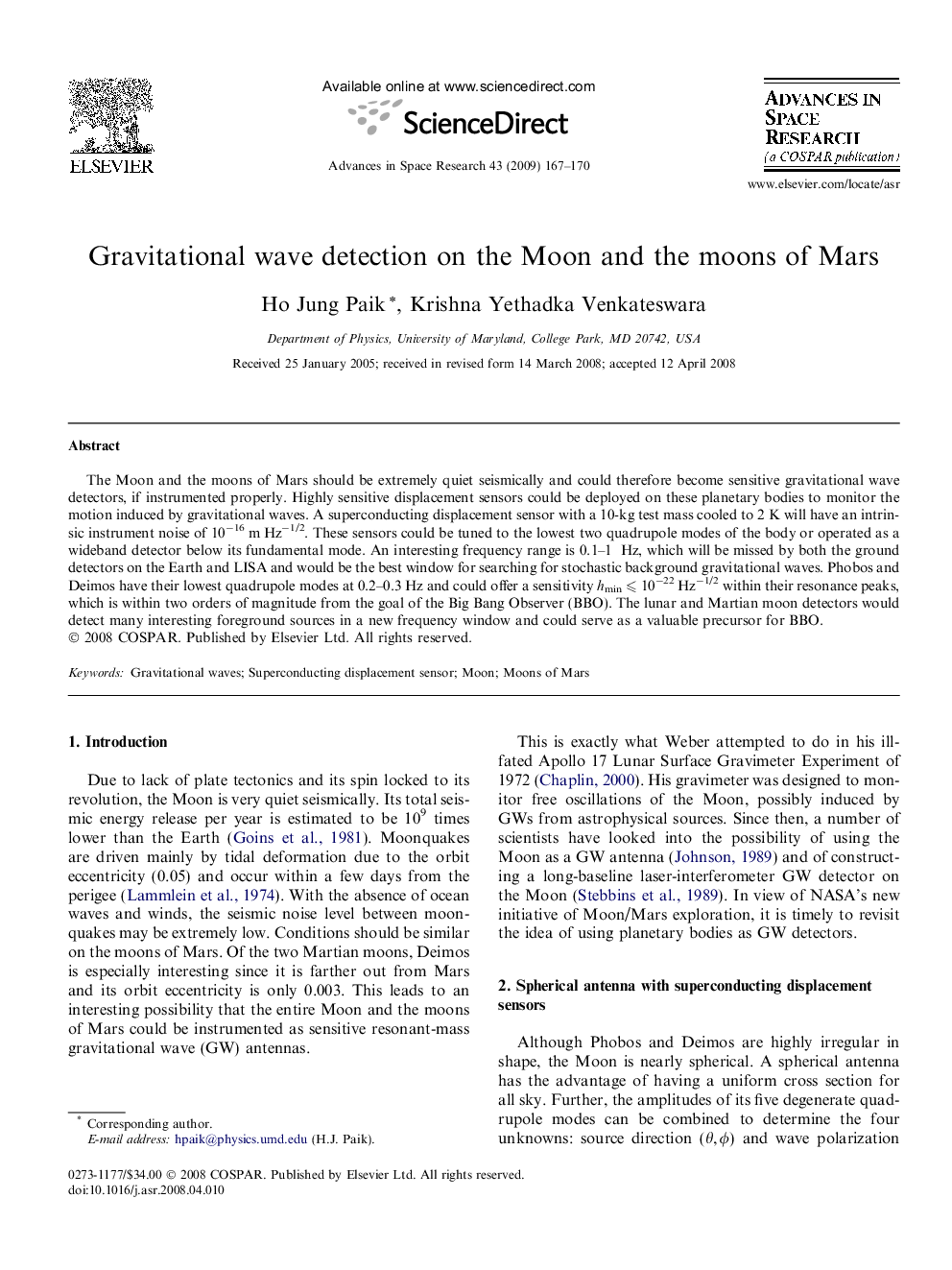| Article ID | Journal | Published Year | Pages | File Type |
|---|---|---|---|---|
| 1765802 | Advances in Space Research | 2009 | 4 Pages |
The Moon and the moons of Mars should be extremely quiet seismically and could therefore become sensitive gravitational wave detectors, if instrumented properly. Highly sensitive displacement sensors could be deployed on these planetary bodies to monitor the motion induced by gravitational waves. A superconducting displacement sensor with a 10-kg test mass cooled to 2 K will have an intrinsic instrument noise of 10−16 m Hz−1/2. These sensors could be tuned to the lowest two quadrupole modes of the body or operated as a wideband detector below its fundamental mode. An interesting frequency range is 0.1–1 Hz, which will be missed by both the ground detectors on the Earth and LISA and would be the best window for searching for stochastic background gravitational waves. Phobos and Deimos have their lowest quadrupole modes at 0.2–0.3 Hz and could offer a sensitivity hmin ⩽ 10−22 Hz−1/2 within their resonance peaks, which is within two orders of magnitude from the goal of the Big Bang Observer (BBO). The lunar and Martian moon detectors would detect many interesting foreground sources in a new frequency window and could serve as a valuable precursor for BBO.
